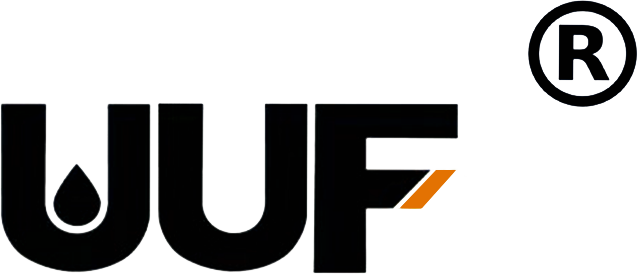Exploring the Comprehensive Manufacturing Process of Automotive Rubber Gasket Seals
Time:
2025-06-16
Exploring the Comprehensive Manufacturing Process of Automotive Rubber Gasket Seals Table of Contents 1. Introduction to Automotive Rubber Gasket Seals 2. Importance of Rubber Gasket Seals in Automotive Applications 3. Key Materials Used in the Manufacturing of Rubber Gaskets 4. The Step-by-Step Manufacturing Process of Rubber Gasket Seals 4.1 Design and Specification 4.2 Material Preparation and
Exploring the Comprehensive Manufacturing Process of Automotive Rubber Gasket Seals
Table of Contents
1. Introduction to Automotive Rubber Gasket Seals
2. Importance of Rubber Gasket Seals in Automotive Applications
3. Key Materials Used in the Manufacturing of Rubber Gaskets
4. The Step-by-Step Manufacturing Process of Rubber Gasket Seals
4.1 Design and Specification
4.2 Material Preparation and Compounding
4.3 Molding Techniques for Gasket Production
4.4 Quality Control Measures
5. Innovative Technologies in Gasket Seal Manufacturing
6. Environmental Considerations in Production
7. Future Trends in Automotive Gasket Technology
8. Frequently Asked Questions (FAQs)
9. Conclusion
1. Introduction to Automotive Rubber Gasket Seals
Automotive rubber gasket seals are essential components that play a crucial role in ensuring the longevity and reliability of vehicles. These seals create a tight barrier between different engine parts, preventing oil, air, and other fluids from leaking. As we explore the manufacturing process of these vital components, we will uncover the complexity and precision involved in their production.
2. Importance of Rubber Gasket Seals in Automotive Applications
In the automotive industry, rubber gasket seals are indispensable. They not only enhance engine performance but also contribute to safety and efficiency. A well-functioning gasket seal minimizes the risk of leaks, which can lead to engine damage and costly repairs. Furthermore, these seals are designed to withstand extreme temperatures and pressures, making them critical for maintaining optimal engine conditions.
3. Key Materials Used in the Manufacturing of Rubber Gaskets
The performance of automotive rubber gasket seals heavily depends on the materials used in their production. The most common materials include:
- **Natural Rubber**: Known for its elasticity and resilience, natural rubber is often used in applications requiring flexibility and durability.
- **Synthetic Rubber**: Types such as EPDM (ethylene propylene diene monomer) and NBR (nitrile butadiene rubber) are favored for their chemical resistance and ability to withstand high temperatures.
- **Reinforcements**: Fibers and fillers may be added to enhance the strength and dimensional stability of the gaskets.
Each material is selected based on specific performance criteria, ensuring that the final product meets the stringent demands of the automotive industry.
4. The Step-by-Step Manufacturing Process of Rubber Gasket Seals
The manufacturing process of rubber gasket seals involves several critical steps, each requiring careful attention to detail to ensure a high-quality product.
4.1 Design and Specification
The manufacturing journey begins with thorough design and specification. Engineers collaborate with manufacturers to develop precise drawings and specifications that outline the dimensions, material requirements, and performance expectations. Advanced CAD (Computer-Aided Design) software is often utilized to create detailed models, ensuring accuracy in production.
4.2 Material Preparation and Compounding
Once the design is finalized, the next step involves material preparation. The selected rubber materials are compounded with various additives, such as accelerators, fillers, and stabilizers. This compounding process is critical, as it determines the final properties of the rubber, including flexibility, hardness, and resilience. Precise measurements and mixing techniques are employed to achieve the desired blend.
4.3 Molding Techniques for Gasket Production
The prepared rubber compound is then subjected to molding processes, which can vary depending on the design and production volume. Common methods include:
- **Compression Molding**: In this technique, the rubber compound is placed into a heated mold, where pressure is applied to shape it into the desired form. Compression molding is ideal for producing large quantities of gaskets with intricate shapes.
- **Injection Molding**: This process involves injecting molten rubber into a mold cavity. Injection molding offers greater precision and is suitable for high-volume production of complex gasket geometries.
- **Transfer Molding**: Similar to compression molding, transfer molding uses a heated chamber to transfer the rubber compound into the mold. This method allows for better control of material flow and is often used for larger parts.
Each of these molding techniques offers advantages depending on the specific application requirements.
4.4 Quality Control Measures
Quality control is paramount in the manufacturing of rubber gasket seals. Throughout the production process, various tests are conducted to ensure that the seals meet industry standards. Common quality checks include:
- **Dimensional Inspection**: Verifying that the produced seals adhere to the specified dimensions and tolerances.
- **Material Testing**: Assessing the physical and chemical properties of the rubber to ensure it meets performance criteria.
- **Functional Testing**: Evaluating the seals under simulated operating conditions to confirm their effectiveness in preventing leaks.
These quality control measures help manufacturers deliver reliable and durable products that meet customer expectations.
5. Innovative Technologies in Gasket Seal Manufacturing
As technology advances, so does the manufacturing process of rubber gasket seals. Innovations such as 3D printing and automation are transforming production capabilities. 3D printing allows for rapid prototyping and the creation of complex geometries that would be challenging to achieve with traditional methods. Automation streamlines processes, improves efficiency, and reduces human error, ultimately enhancing product quality.
6. Environmental Considerations in Production
In today’s environmentally conscious world, manufacturers are increasingly focused on sustainable practices. This includes sourcing eco-friendly materials, minimizing waste, and implementing energy-efficient production techniques. Efforts to recycle scrap rubber and reduce emissions during the manufacturing process are also becoming more common, aligning with global initiatives for sustainability.
7. Future Trends in Automotive Gasket Technology
The automotive industry is constantly evolving, and the future of gasket seal technology looks promising. Innovations such as smart gaskets equipped with sensors may soon emerge, providing real-time monitoring of engine performance and potential leaks. Additionally, the development of advanced materials with enhanced properties will likely lead to even more reliable and durable gasket seals.
8. Frequently Asked Questions (FAQs)
8.1 What are automotive rubber gasket seals used for?
Automotive rubber gasket seals are used to create a tight barrier between engine components, preventing leaks of oil, coolant, and other fluids.
8.2 What materials are commonly used in rubber gasket manufacturing?
Common materials include natural rubber, synthetic rubber (such as EPDM and NBR), and various additives to enhance performance.
8.3 How are rubber gaskets manufactured?
Rubber gaskets are manufactured through a series of steps that include design, material preparation, molding, and quality control.
8.4 What are the benefits of using synthetic rubber for gaskets?
Synthetic rubber typically offers superior resistance to chemicals and temperature extremes, making it ideal for automotive applications.
8.5 What is the role of quality control in gasket manufacturing?
Quality control ensures that the gaskets meet specified dimensions, material properties, and functional performance, preventing potential failures.
9. Conclusion
The manufacturing process of automotive rubber gasket seals is a complex journey that requires precision, innovation, and adherence to stringent quality standards. As we have explored, these seals are vital for the performance and safety of vehicles, and their production is continuously evolving with advancements in technology and materials. Understanding this process not only highlights the importance of rubber gasket seals in the automotive industry but also showcases the commitment to quality and sustainability that manufacturers uphold. With the future looking bright, the ongoing innovations in gasket technology promise to further enhance vehicle performance and reliability.
Keyword:
Gasket seal factory


















